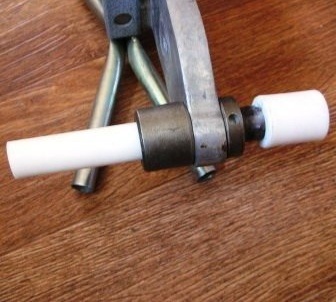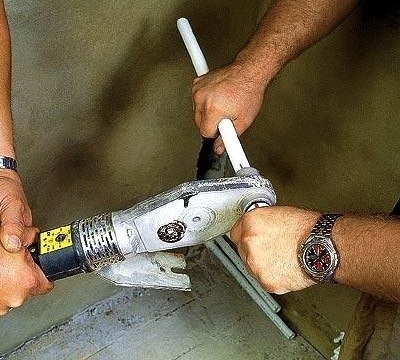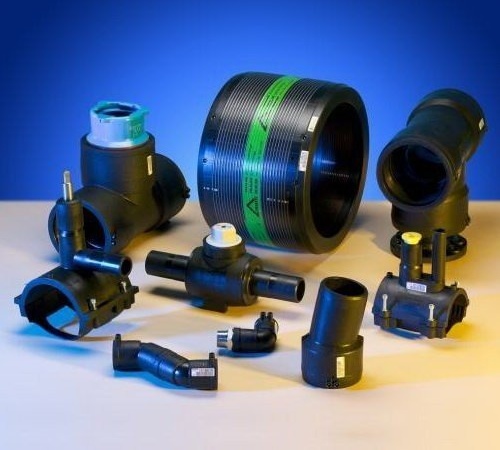Installation and installation of heating using polypropylene pipes: from design to welding
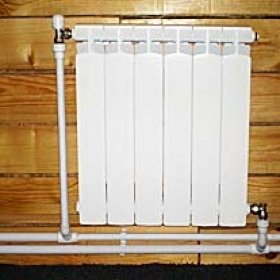
The theme of arranging heating is relevant not only on the eve of the onset of cold weather. Unfortunately, there are not so many really warm months in the calendar, so it takes a long time to heat your home. There are many ways to do this. However, recently, new, more economical ones have appeared. And to equip the traditional, new materials appear that make it cheaper and more efficient to operate. The installation of heating from polypropylene pipes, which have become a good alternative to not only steel, but also metal-plastic parts, is becoming increasingly popular.
Why polypropylene?
Choosing pipes for arranging heating, many stop at polypropylene. This easily explains the many benefits that their use provides:
- Long service life due to material properties. It does not corrode. In addition, salts are not deposited on the smooth internal surface and pipes do not “overgrow”.
- Simple installation. The installation of the system can be done independently, while, for example, steel parts require expensive welding.
- High strength and reliability. Despite its flexibility, the material is characterized by high mechanical strength and is capable of working at significant pressure and temperature.
- Profitability. So, a heating system from polypropylene pipes will cost less than analogues from other materials.
- The increase in heat transfer energy. Plastic pipes significantly improve the circulation of the coolant and, accordingly, its heat transfer. In addition, a low coefficient of thermal conductivity minimizes heat loss.
- High ductility, allowing the implementation of various necessary bends of the pipeline.
However, do not forget about the shortcomings. The material has a sufficiently high coefficient of thermal expansion, so the pipes can sag. Either fasten them with clips more often or use reinforced parts. Keep in mind that the coefficient of thermal expansion does not exceed the norm at a coolant temperature below 60 ° C.
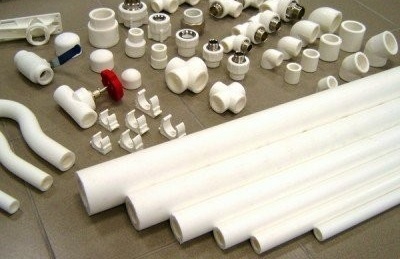
With all the advantages, polypropylene pipes have one significant drawback: a high coefficient of thermal expansion, which gives sagging parts at an energy temperature above 60 ° C
What other pipes are suitable for the installation of heating systems, read in our material:https://aquatech.tomathouse.com/en/uchebnik/truby/kakie-truby-dlya-otopleniya-luchshe-vybrat.html
A competent system design is a necessary document
If the installation of the system is quite simple to perform independently, then the design of the project is best entrusted to a professional. This is due to the fact that having no experience with heating it is very difficult to take into account the nuances that can affect the efficiency of the system. When designing a project, the following factors must be taken into account:
- Installation location and number of heating appliances. The temperature in the room depends on this.
- Compliance with standardized pipe angles. It is relevant both for gravity structures, and for structures with forced circulation.
- Proper selection of pipe diameters. The system should be composed of elements of different diameters, which ensures good circulation of the coolant.
- Brand used pipes. It is selected depending on the temperature and pressure of the carrier. In any case, the reinforced version is more preferable.
- Choosing the type of heating system. It is carried out taking into account the features of the building. Options with lower or upper feed can be installed.
To draw up a heating project, an invited specialist should inspect the room. Identify all its advantages and disadvantages, consider all options for arranging heating. After that, calculations are carried out, and a project is drawn up, in the graphic part of which it is necessarily indicated:
- boiler piping diagram;
- places of installation of heating appliances, methods of their fastening and connection;
- pipe diameters;
- pipeline slope angles.
Having such a project, you can start self-installation.
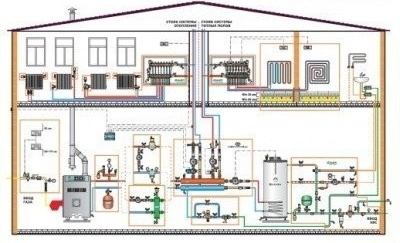
Before starting installation work, a construction project is necessarily carried out. Based on the graphic part, the amount of material needed, the dimensions of the parts, etc. are calculated.
Installation Technology
If you are installing the heating system using polypropylene pipes for the first time, you need to get acquainted with some of the features of the process.
Features of working with polypropylene pipes
Installation of the system from polypropylene pipes is quite simple. The material is tougher than polyethylene, so the fasteners of the elements are most often made using fittings. Pipes with metal inserts, for example, with mixers or taps, are connected by special fittings to brass elements. In the recommendations, you can get acquainted with the main ways of connecting such pipes:
- Socket welding. One end of the part expands in a special way, another element is inserted into it.
- Socket welding. Fastening is provided with an additional element.
These methods can only be used to connect narrow pipes whose diameter does not exceed 63 mm. If the dimensions of the part are larger, butt welding is used. Properly performed work guarantees the pipeline about 50 years of excellent service.

To connect polypropylene pipes, you will need a set of special tools, including scissors for cutting parts and a soldering iron. They can be purchased or rented.
Soldering work is performed at a temperature of at least 5 ° C. If the room is cooler, you should provide a warm area in the soldering area. Otherwise, the connections will not be durable. It is best to do the installation with an assistant, especially if you have to do this for the first time. Also, in the absence of experience, it is necessary to practice connecting the pipes on unnecessary scraps. Having acquired sufficient dexterity, it will be possible to solder carefully and without unnecessarily overheating the surface of the part, which negatively affects the quality of the seam.
Read about the features of soldering polypropylene pipes in our article:https://aquatech.tomathouse.com/en/uchebnik/svarka/pajka-polipropilenovyx-trub.html.
Installation sequence
Installation of the heating system can be represented in the form of step-by-step instructions:
- Based on the project, we calculate the lengths of pipe segments;
- specify the connection methods and types of fittings;
- in the directory we determine the necessary duration of welding and cooling for pipes used in the work of diameters;
- the parts are brought into the room in advance so that they can warm up and not crack during the welding process;
- we measure the pipes of the desired size and mark them;
- with special scissors we perform straight cuts perpendicular to the surface;
- the edges of the parts are cleaned and degreased with an alcohol solution;
- we select the necessary nozzles of the soldering apparatus, degrease, install in place and heat up the device;
- the prepared parts are placed in the holes of the soldering iron;
- we maintain the warm-up time determined by the reference book;
- we remove the hot elements, put them in place and still stand the time necessary for complete cooling.
Do-it-yourself polypropylene heating is easy to assemble. It only takes a desire to correctly and accurately carry out all the operations and some skill in handling pipes, which is developed very quickly, especially if you take some time to do the training. Proceed with installation by reading the instructions and reference materials for soldering polypropylene. Then the result of the efforts spent will only please with warmth and comfort in the house.
